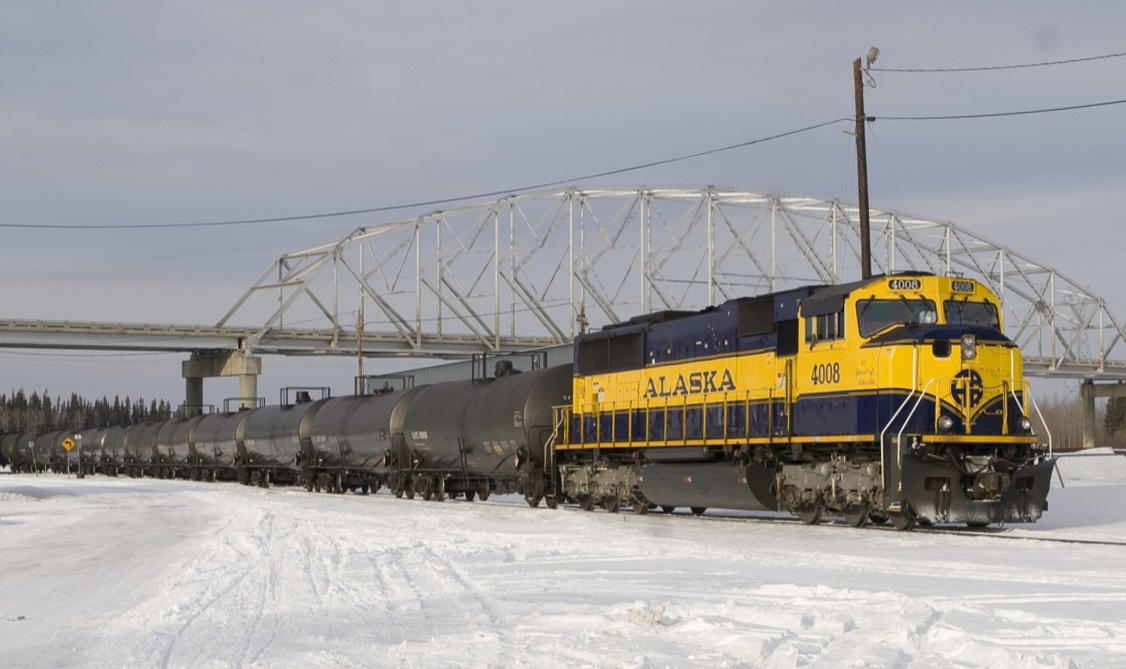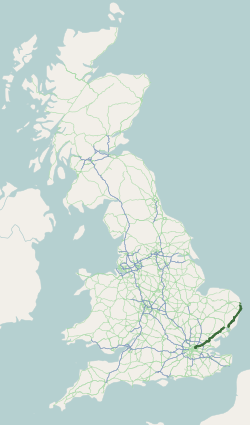|
Gorleston Links Railway Station
Gorleston Links was a railway station in Gorleston, Norfolk, England; it was a stop on the Norfolk and Suffolk Joint Railway's Yarmouth-Lowestoft line. It was located on an embankment to the north of Links Road and to the south-west of the end of Hill Avenue; the tracks southward crossed Links Road by bridge. History Gorleston Links was opened in July 1914 to serve the adjacent golf course. The station was closed four years later as a post-war economy measure, but later reopened in August 1919; this time as a result of the increasing number of holidaymakers visiting the area. Initially named ''Gorleston Links Halt'', the station was renamed just ''Gorleston Links'' in 1968, only two years before its eventual closure. The route of the railway line south of Gorleston Links ran almost parallel with the A12 Lowestoft Road to Station Road at Hopton railway station Hopton-on-Sea was a railway station serving the village of Hopton-on-Sea, in Norfolk, England. It was a stop on t ... [...More Info...] [...Related Items...] OR: [Wikipedia] [Google] [Baidu] [Amazon] |
Railway Stations In Great Britain Closed In 1970
Rail transport (also known as train transport) is a means of transport using wheeled vehicles running in tracks, which usually consist of two parallel steel rails. Rail transport is one of the two primary means of land transport, next to road transport. It is used for about 8% of passenger and freight transport globally, thanks to its energy efficiency and potentially high speed.Rolling stock on rails generally encounters lower frictional resistance than rubber-tyred road vehicles, allowing rail cars to be coupled into longer trains. Power is usually provided by diesel or electric locomotives. While railway transport is capital-intensive and less flexible than road transport, it can carry heavy loads of passengers and cargo with greater energy efficiency and safety. Precursors of railways driven by human or animal power have existed since antiquity, but modern rail transport began with the invention of the steam locomotive in the United Kingdom at the beginning of the 19th c ... [...More Info...] [...Related Items...] OR: [Wikipedia] [Google] [Baidu] [Amazon] |
Railway Stations In Great Britain Opened In 1919
Rail transport (also known as train transport) is a means of transport using wheeled vehicles running in railway track, tracks, which usually consist of two parallel steel railway track, rails. Rail transport is one of the two primary means of land transport, next to road transport. It is used for about 8% of passenger and rail freight transport, freight transport globally, thanks to its Energy efficiency in transport, energy efficiency and potentially high-speed rail, high speed.Rolling stock on rails generally encounters lower friction, frictional resistance than rubber-tyred road vehicles, allowing rail cars to be coupled into longer trains. Power is usually provided by Diesel locomotive, diesel or Electric locomotive, electric locomotives. While railway transport is capital intensity, capital-intensive and less flexible than road transport, it can carry heavy loads of passengers and cargo with greater energy efficiency and safety. Precursors of railways driven by human or an ... [...More Info...] [...Related Items...] OR: [Wikipedia] [Google] [Baidu] [Amazon] |
Railway Stations In Great Britain Closed In 1918
Rail transport (also known as train transport) is a means of transport using wheeled vehicles running in tracks, which usually consist of two parallel steel rails. Rail transport is one of the two primary means of land transport, next to road transport. It is used for about 8% of passenger and freight transport globally, thanks to its energy efficiency and potentially high speed.Rolling stock on rails generally encounters lower frictional resistance than rubber-tyred road vehicles, allowing rail cars to be coupled into longer trains. Power is usually provided by diesel or electric locomotives. While railway transport is capital-intensive and less flexible than road transport, it can carry heavy loads of passengers and cargo with greater energy efficiency and safety. Precursors of railways driven by human or animal power have existed since antiquity, but modern rail transport began with the invention of the steam locomotive in the United Kingdom at the beginning of the 19th c ... [...More Info...] [...Related Items...] OR: [Wikipedia] [Google] [Baidu] [Amazon] |
Railway Stations In Great Britain Opened In 1914
Rail transport (also known as train transport) is a means of transport using wheeled vehicles running in railway track, tracks, which usually consist of two parallel steel railway track, rails. Rail transport is one of the two primary means of land transport, next to road transport. It is used for about 8% of passenger and rail freight transport, freight transport globally, thanks to its Energy efficiency in transport, energy efficiency and potentially high-speed rail, high speed.Rolling stock on rails generally encounters lower friction, frictional resistance than rubber-tyred road vehicles, allowing rail cars to be coupled into longer trains. Power is usually provided by Diesel locomotive, diesel or Electric locomotive, electric locomotives. While railway transport is capital intensity, capital-intensive and less flexible than road transport, it can carry heavy loads of passengers and cargo with greater energy efficiency and safety. Precursors of railways driven by human or an ... [...More Info...] [...Related Items...] OR: [Wikipedia] [Google] [Baidu] [Amazon] |
Former Norfolk And Suffolk Joint Railway Stations
A former is an object, such as a template, gauge or cutting die, which is used to form something such as a boat's hull. Typically, a former gives shape to a structure that may have complex curvature. A former may become an integral part of the finished structure, as in an aircraft fuselage, or it may be removable, being used in the construction process and then discarded or re-used. Aircraft formers Formers are used in the construction of aircraft fuselage, of which a typical fuselage has a series from the nose cone to the empennage, typically perpendicular to the longitudinal axis of the aircraft. The primary purpose of formers is to establish the shape of the fuselage and reduce the column length of stringers to prevent instability. Formers are typically attached to longerons, which support the skin of the aircraft. The "former-and-longeron" technique (also called stations and stringers) was adopted from boat construction, and was typical of light aircraft built until th ... [...More Info...] [...Related Items...] OR: [Wikipedia] [Google] [Baidu] [Amazon] |
Gorleston-on-Sea Railway Station
Gorleston-on-Sea railway station served the town of Gorleston-on-Sea in Norfolk, England. It was a stop on the Norfolk and Suffolk Joint Railway's Yarmouth-Lowestoft line that closed in 1970. History Built in 1903, the route ran from in Suffolk Suffolk ( ) is a ceremonial county in the East of England and East Anglia. It is bordered by Norfolk to the north, the North Sea to the east, Essex to the south, and Cambridgeshire to the west. Ipswich is the largest settlement and the county ... to in Norfolk. The station buildings included a large brick goods shed, signalbox, footbridge and an extensive coal depot. Following the closure of the to line to passengers in November 1959, express trains from to Great Yarmouth were rerouted via Lowestoft where they reversed, before running along the coast line through , and Gorleston-on-Sea. However, this diversion did not last long before some of the London trains were again rerouted into . In 1966, all stations on the line we ... [...More Info...] [...Related Items...] OR: [Wikipedia] [Google] [Baidu] [Amazon] |
Great Yarmouth (borough)
The Borough of Great Yarmouth is a Non-metropolitan district, local government district with Borough status in the United Kingdom, borough status in Norfolk, England. It is named after its main town, Great Yarmouth, and also contains the town of Gorleston-on-Sea and a number of villages and rural areas, including part of The Broads. Other notable settlements include Bastwick, Belton, Norfolk, Belton, Bradwell, Norfolk, Bradwell, Burgh Castle, Caister-on-Sea, California, Norfolk, California, Fleggburgh, Hemsby, Martham, Hopton-on-Sea, Ormesby St Margaret, Rollesby, St Olaves, Scratby, Stokesby and Winterton-on-Sea. The borough is on the east coast of Norfolk, facing the North Sea. It borders North Norfolk to the north, Broadland to the west, South Norfolk to the south-west, and East Suffolk District, East Suffolk to the south. History The town of Great Yarmouth was an ancient borough, having been granted a charter in 1208. The borough was enlarged in 1668 to take in the Southtown ... [...More Info...] [...Related Items...] OR: [Wikipedia] [Google] [Baidu] [Amazon] |
Hopton Railway Station
Hopton-on-Sea was a railway station serving the village of Hopton-on-Sea, in Norfolk, England. It was a stop on the Norfolk and Suffolk Joint Railway line between and . It opened in 1903 and closed in 1970. History The station opened as ''Hopton'' on 13 July 1903 and was renamed to ''Hopton-on-Sea'' on 18 July 1932. From 1935 to 1939, and possibly for some of 1934, Hopton had a static London and North Eastern Railway, LNER camping coach in a siding; it was used as accommodation for holidaymakers. A coach was also positioned here by Eastern Region of British Railways from 1952 to 1954, and two coaches until the end of the 1960 season. These were replaced in 1961 by two ''Pullman'' camping coaches, until all camping coaches in the region were withdrawn at the end of the 1965 season. In the 1960s, the station was destaffed and the line was reduced from double track to single track. It was closed on 4 May 1970, along with the rest of the line. After closure, the station was demo ... [...More Info...] [...Related Items...] OR: [Wikipedia] [Google] [Baidu] [Amazon] |
A12 Road (England)
The A12 is a major road in Eastern England. It runs north-east/south-west between London and the coastal town of Lowestoft in the north-eastern corner of Suffolk, following a similar route to the Great Eastern Main Line until Ipswich. A section of the road between Lowestoft and Great Yarmouth became part of the A47 road, A47 in 2017. Between the junctions with the M25 and the A14, the A12 forms part of the unsigned International E-road network, Euroroute European route E30, E30 (prior to 1985, it was the E8). Unlike most Great Britain road numbering scheme, A roads, this section of the A12, together with the A14 road (Great Britain), A14 and the A55 road (Great Britain), A55, has junction numbers as if it were a motorway. The section of the A12 through Essex has sections of dual two lanes and dual three lanes, with eight changes in width between the M25 to Ipswich. It was named as Britain's worst road because of "potholes and regular closures due to roadworks" in a 2007 survey b ... [...More Info...] [...Related Items...] OR: [Wikipedia] [Google] [Baidu] [Amazon] |





